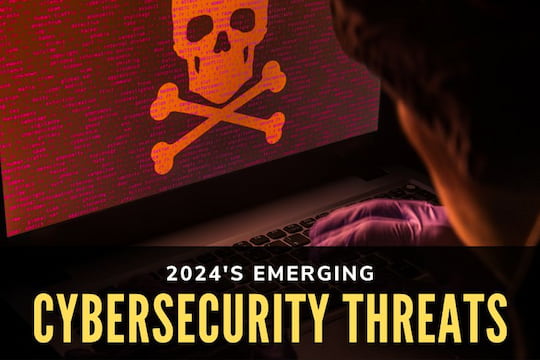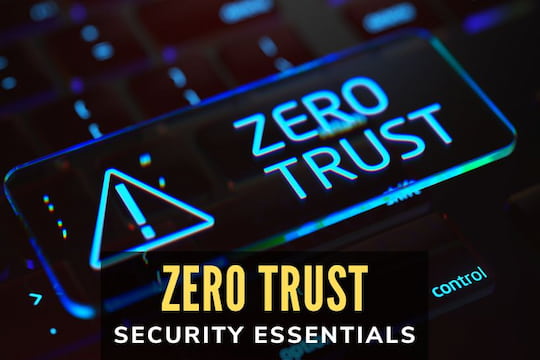With 62% of enterprises believing that their organization's cybersecurity teams are understaffed, it's no wonder that many executives are concerned with what the emerging cybersecurity threats in 2024 are going to be. Couple that with the fact that over 60% of all enterprise data is stored in the cloud, and you will easily see why cyber threats continue to be at the forefront of risk management concerns.
Artificial Intelligence
We've seen how artificial intelligence (AI) can be used in cybersecurity programs to scan for threats and harness machine learning to enhance its protective ability, but cybercriminals have seen the upside of AI usage as well. Leveraging AI to improve social engineering attacks is an up-and-coming threat that has already been reported to the FTC.
Continued Prevalence of Ransomware

Ransomware tactics have continued to evolve, and the ransom demands are being met with enough frequency to ensure the dominance of this strategy. Research estimates that by 2024, cyber crime will account for costs of $10.5 trillion worldwide.
Remote Workforces
The shift in popularity when it comes to remote work has left lasting changes in the expectations of the workforce. In the U.S. alone, 36.2 million people work remotely, according to research conducted by Upwork. That presents challenges when it comes to securing networks with endpoints that may stretch coast to coast or even beyond. Bring your own device policies continue to further complicate matters by limiting the security controls available and lacking the monitoring typically included in business-owned devices.

The sense of security one feels at home also leads many to believe they're not at risk of cyber attacks. That's a dangerous stance, considering remote workers have access to the same sensitive data that those in more secure environments often do.
The Rise of Mobile Device Threats
One of the quickly emerging cybersecurity threats in 2024 is the risk facing mobile devices. Even if the devices aren't used for work purposes, they still often connect to business networks or have some form of sensitive information on them. Those that don't still contain personal information that their owners would want to safeguard anyway.

Mobile applications are increasing in popularity, as are both the malware threats targeting them and those carried by them. The unwitting user can easily download a compromising application, leading to cyber attackers gaining access to, or control of, the device and network it's connected to.
Data Privacy Regulations
While this isn't a threat, it's a recognition of the duty of private and public enterprises in possession of citizens' sensitive data to protect that information from unauthorized disclosure or theft. With regulations like the GDPR in the EU, CCPA in California, and numerous other regulatory laws working their way through legislatures in multiple U.S. states, there is a growing call for national regulation in the U.S. to streamline regulatory compliance efforts.
These laws place strict requirements on the security measures in place and, most importantly, ensure that data is purged when not needed and disposed of properly. That is why emerging cyber threats must be met with data security management best practices.
At West Coast Computer Recycler, we specialize in secure data destruction both as a service for your business and as a part of our IT asset destruction services. We can help you safely purge your unneeded sensitive information or recover value from your aging IT assets. We also offer e-waste recycling services, and you can be sure that we are compliant with all existing regulations as we are an experienced California company serving Los Angeles and Orange Counties. Contact us for a free quote today.


























